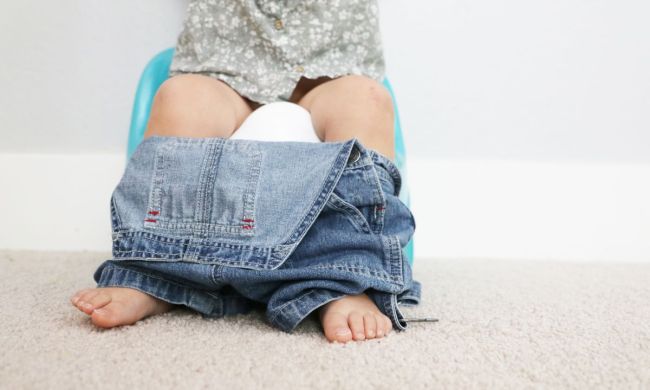It takes a long time for babies to transition from bottle to cup, but you can help them graduate smoothly onto a big-kid cup with lots of positive reinforcement and the right cup. But to be honest, “the right cup” is a little misleading. It really depends on your child’s development and your personal preference as a parent. Before you make your decision, take a look at our thorough sippy cup versus straw cup breakdown.
Comfort and feel
Sippy cup: Babies find sippy cups easier to use because they’re very similar to breast milk bottles. They encourage your child to suck in a manner similar to how they would on a nipple or bottle nipple. Moreover, most sippy cups have a soft spout that’s meant to be gentle on kid’s teething gums. As a result, they find sippy cups comforting, and when they get used to this cup, it’s a little more difficult to wean them off later on. The bottom line? Most parents use sippy cups only as a temporary transitional cup until they master a spoutless or regular cup.

Straw cup: By design, straw cups make your child work a little harder for a drink. The narrow spout and different mechanism might turn off your toddler from straw cups at first, but keep trying and they’ll eventually get it. Straw cups train different parts of your child’s face and mouth muscles that are beneficial for speech development.
Speech development
Sippy cup: When we speak, our tongue moves around our mouths. Additionally, our mouths form different shapes to produce a variety of sounds in our language. If you pay close attention, you’ll also notice that we use jaw and other facial muscles to speak. Which brings me to this: One disadvantage about sippy cups is they don’t adequately exercise your child’s oral or facial muscles. Because sippy cups only require the simple sucking motion your child has been used to since birth, they’re not learning any new oral motor skills. Here are the details behind sippy cups: Breast milk bottles and sippy cups mean your child places their tongue at the bottom of the spout.
Straw cup: By contrast, straw cups teach your child how to drink instead of simply sucking on the spout. Their tongue is now placed at the back of the mouth, a new technique that will help them develop new language skills as they grow older. At 18 months old, your child will start to speak in short sentences. Introducing a straw up at this age or before helps them form new shapes and sound out different words that require the same tongue placement they use when drinking from a straw cup. Not only do straw cups discourage lisps and unclear pronunciation, but they also encourage proper food and drink swallowing skills.
Hand-eye coordination development

Both straw and sippy cups will develop your child’s hand-eye coordination. When they pick up a bottle, lift it up to their mouths, and tilt their head back to drink, they’re slowly practicing smooth hand-eye coordination they need for picking up other items like toys and eating utensils. Of course, they’ll most likely still have accidents every now and then. Read: You’ll still be cleaning up messes for the next few months or years. But hang in there, it gets better! As with any practiced skill, your baby’s cup-drinking ability will improve with time.
Ease of cleaning
Sippy cup: Sippy cups are typically composed of three different parts: the bottle, the spout, and the spout ring. Other models have handles that you can remove once your child has a better grip on the bottle. These parts are relatively easy to clean, and most are safe to use in a dishwasher with gentle soaps and hot water.
Straw cup: One con about straw cups is that they’re a little more difficult to clean. You have to make sure the straw, spout, cover, and bottle are all clean to prevent mold or mildew from forming in the little crevices. A good way to make sure your cups are always clean is soaking them in gentle dishwashing soap and warm water before scrubbing them clean.
Other alternatives
If you want to skip straw and sippy cups altogether, you might go straight to open cups. It may seem intimidating and messy, but all you need is lots of patience, bibs, and something to soak up potential spills at all times. It will take a while, but the rewards are well worth it! Another key thing to remember is to make sure the cup is small and narrow enough for your child to hold comfortably. Since toddlers tend to be very particular, you want to give them the best possible first-time experience with whatever cup you choose to go with so that the transition from bottle to cup is a seamless one.

You might also consider spoutless cups, which are convenient because they prevent spills. A common favorite is Munchkin’s trainer cup, which holds 7 ounces of liquid. It’s available in pink, green, purple, and blue for $6 each. The side handles make it easy for little hands to pick up and set down. For advanced toddlers, a handle-free cup might be more comfortable since they have more developed motor skills by this age. This handle-free alternative from Munchkin is made of stainless steel to retain drink temperature and comes with a top lid for portability. Since it’s designed for toddlers, it can hold up to 10 ounces and costs $15.
So should you go with a straw or sippy cup? Our research points to straw cups as the more beneficial option, but don’t feel guilty if you use a sippy cup. There’s a lot of claims from different sources saying toddlers are ready to give up training cups by the time they’re two or three, but in reality, a lot of kids use some type of trainer cup until preschool. Give your toddler plenty of opportunities to try different kinds of cups and they’ll become experienced cup users in no time.


